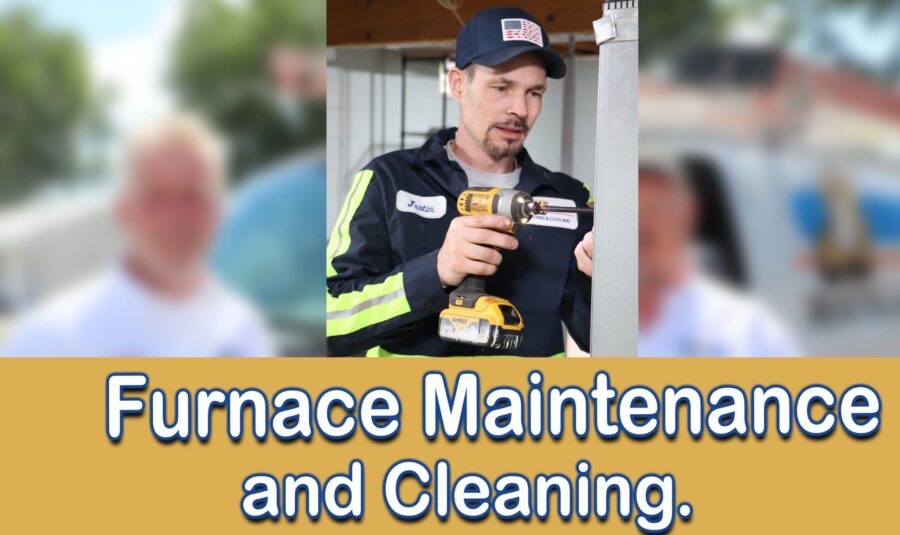It is customary for homeowners to contact their HVAC service provider only when something goes wrong with their HVAC system. But to ensure the efficiency of your unit, furnace maintenance and cleaning should be done regularly. Your furnace experiences wear and tear while heating. Unmaintained furnaces increase energy costs, necessitate more repairs, and leave homeowners less comfortable. These procedures strain the system’s parts and could make it less reliable and efficient.
Why Regular Furnace Maintenance and Cleaning?
Regular furnace maintenance and cleaning keeps your HVAC fit throughout the season. All of the vital parts of the system must be checked, cleaned, adjusted, lubricated, and tested as part of furnace maintenance or a furnace tune-up. Homeowners can schedule a furnace tune-up at least once annually or just before the winter weather arrives.
What Goes into Maintaining a Furnace?
Depending on the business selected, several furnace tune-up procedures are used. Even so, you should anticipate these fundamental guidelines when a professional is performing furnace maintenance, regardless of the various companies. They consist of the following:
- Examining the air intake grill for obstructions
- Cleaning and inspecting the blower and its parts, including removing the blower wheel to check that it is clear of dirt and debris.
- Performing the amp-draw test on the blower motor and comparing the results to the unit’s specified specs (This lessens the chance of a fire starting and increases the lifespan of the blowers’ parts.)
- Examining the vent systems for obstructions or leaks
- Checking the access door of the blower for a secure seal
- Check the heat exchanger for corrosion, cracks, or evidence of separation. Such damage to a heat exchanger could enable the hazardous escape of carbon monoxide.
- All the motor’s working elements are lubricated to reduce friction (The motor has to work harder when the moving parts are not lubricated. This uses a lot more electricity, which raises energy costs and hastens the early failure of the heating system.)
- Ensuring correct burner ignition and evaluating the flame sensor’s performance, ensuring that all of the furnace’s electrical connections are secure and checking all of the wirings for corrosion or rust
- Checking for obstacles in the flue (Poor interior air quality could arise from failing to inspect the vent. This occurs when an obstruction in the duct prevents the hazardous combustion gases from escaping.)
- Checking the thermostat’s calibration might help you save money on energy costs by minimizing overheating. A properly adjusted thermostat guarantees your home’s heating system is regulated for maximum comfort.)
More checking is required for homeowners using gas and oil furnaces. The technician will carry out the following duties:
- The combustion gases’ analysis and comparison to the furnace’s specs
- inspecting the thermocouple and, if necessary, replacing it
- examining the electronic ignition or the pilot to see if it is operating properly (they will also look for fuel line leaks that might let dangerous gases escape and cause a fire).
- Checking to determine if the burner is working properly and cleaning it if not
- Making sure that the appropriate amount of fuel reaches the burners and checking the manifold’s gas pressure
You can do a few things to ensure your heating system retains its performance after routine maintenance by one of our experts. You ought to:
- Change or clean the furnace filters every two months during the heating season.
- By setting an incense stick on fire at the joints, you can check every exposed ducting for air leakage. Use metal tape to plug up any leaks.
- Oil the oil cup as needed to maintain lubrication in the motor bearings of all the blowers.
- To keep the blower’s unit clean, vacuum it occasionally. Before vacuuming, make sure the circuit breaker is completely closed.
- Place an outdoor thermometer adjacent to the thermostat and run the system to see whether the readings are consistent. If they are, the thermostat is accurate.
Conclusion
Homeowners are thereby advised not to underestimate the benefits of furnace maintenance and cleaning. Invite a professional heating and cooling technician to your home not only when you notice a fault. Tuning up your system could save you from spending unnecessarily for repairs.
